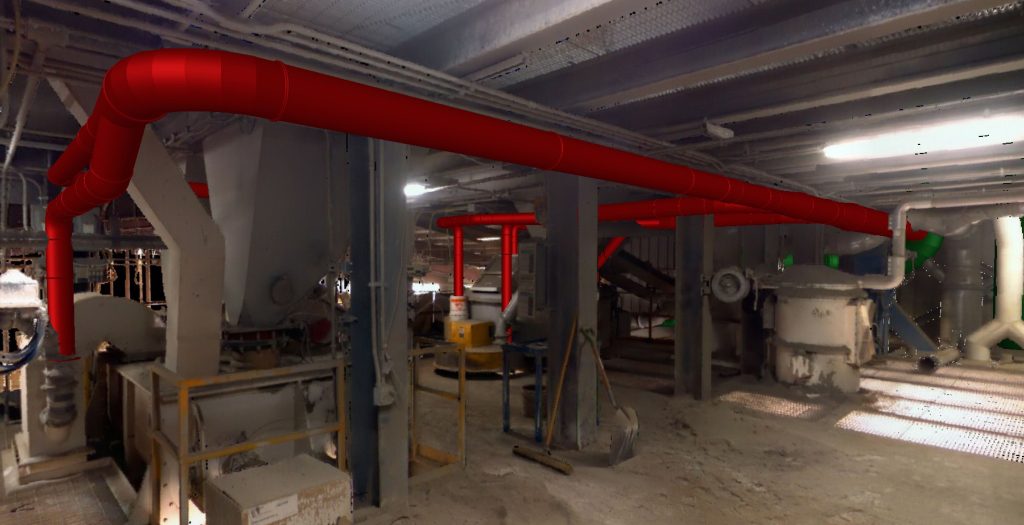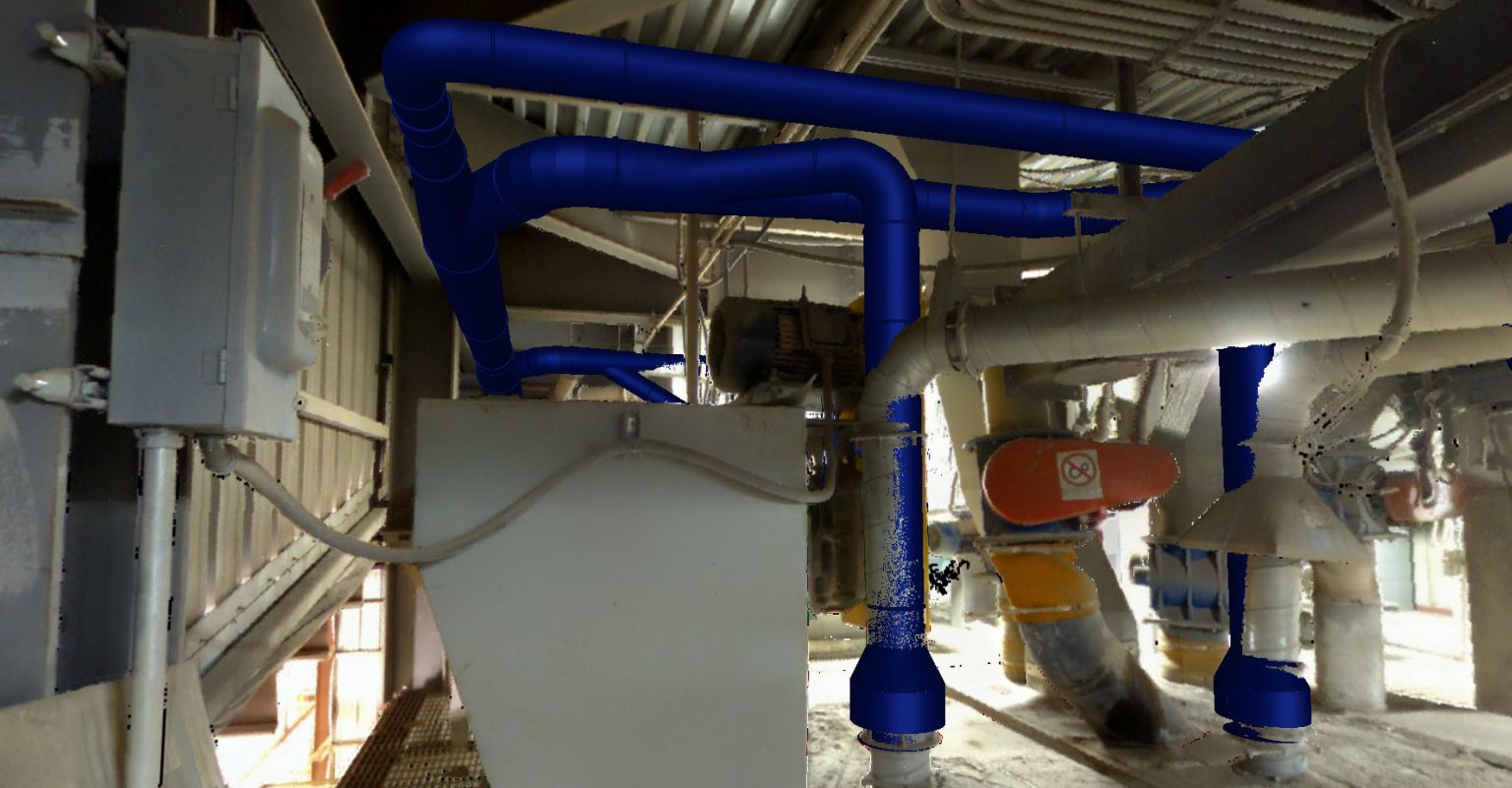In many industrial settings, dust collection is essential for regulatory compliance and general productivity – but the process of designing and installing a dust, fume, or mist collection system can be imprecise and challenging.
The problem: Most systems are designed on paper or with basic CAD (Computer-Aided Design) software. When the time comes for installation, the system is often not compatible with real-world conditions.
Proposed equipment locations may interfere with workers or other equipment, ducting may be planned that collides with equipment, or it may be routed into areas that inconvenience workers, and other plans may not be practical for the facility. Corrections are made during installation, and essential parts may be missing, or new parts may need to be designed and ordered.
The “Old Way” of Designing Dust Collection Systems Leads to Problems (and Lower Profits)
 If you have installed dust collection systems, you’re familiar with the issues of the traditional design process: Due to field revisions during the install, on average, up to 30% of the delivered components are not needed, and you may need to order as much as 50% additional components to complete the installation.
If you have installed dust collection systems, you’re familiar with the issues of the traditional design process: Due to field revisions during the install, on average, up to 30% of the delivered components are not needed, and you may need to order as much as 50% additional components to complete the installation.Dust collection systems must be uniquely engineered for the plant or facility. By working with us, you can provide that accuracy for your facility or customer and get a leg up on the competition.
The Solution: 3D Imaging for Fast, Precise Dust Collection System Design and Installation
Our approach uses 3D imaging technology to create site-specific design, enabling clients to address concerns prior to installation. The ductwork is designed for assembly: every part that is needed is delivered to the job site with detailed installation instructions.
We work with many dust, fume, and mist collector manufacturers and facilities to determine the collection requirement at each dust generation point. By using our digital imaging process, we create a three-dimensional view of the plant or facility, and the proposed dust collection system is superimposed over the view.
This methodology provides a number of advantages:
- On-site measurements are eliminated. All equipment and part requirements can be determined offsite (and modified, when necessary). Hood and duct designs are determined after the imaging and during the initial project stages.
- More accurate price quotes. System proposals are more accurate, enabling customers to budget effectively.
- Improved communication with clients. With precise imaging, you can enlist plant personnel in the design process for their facility. Hold design review meetings via Zoom, MS Teams, etc., to revise the design and work out any concerns prior to system procurement.
- No surprises during installation. The equipment and ducting is placed over the 3D image and avoids all interferences, so you’ll eliminate delays when installing.
- Improved efficiency. From the initial survey to installation, the process can be completed within days, not months. Typical system designs can be completed within two weeks.
By working from a precise image and using our CAD system, you’ll rarely wait for last-minute deliveries of system components. You’ll get in, install, and get out.
On-site delays, reorders, and wasted parts are eliminated. The facility benefits from faster installations, less downtime, lower costs, and a more efficient design, which means a better system and more approval of your business.

To learn how to take advantage of our approach – and to get a competitive advantage while reducing costs and improving the workplace – send us a message.
By working from a precise image and using our CAD system, you’ll rarely wait for last-minute deliveries of system components. You’ll get in, install, and get out. On-site delays, reorders, and wasted parts are eliminated. The facility benefits from faster installations, less downtime, lower costs, and a more efficient design, which means a better system and more approval of your business.
